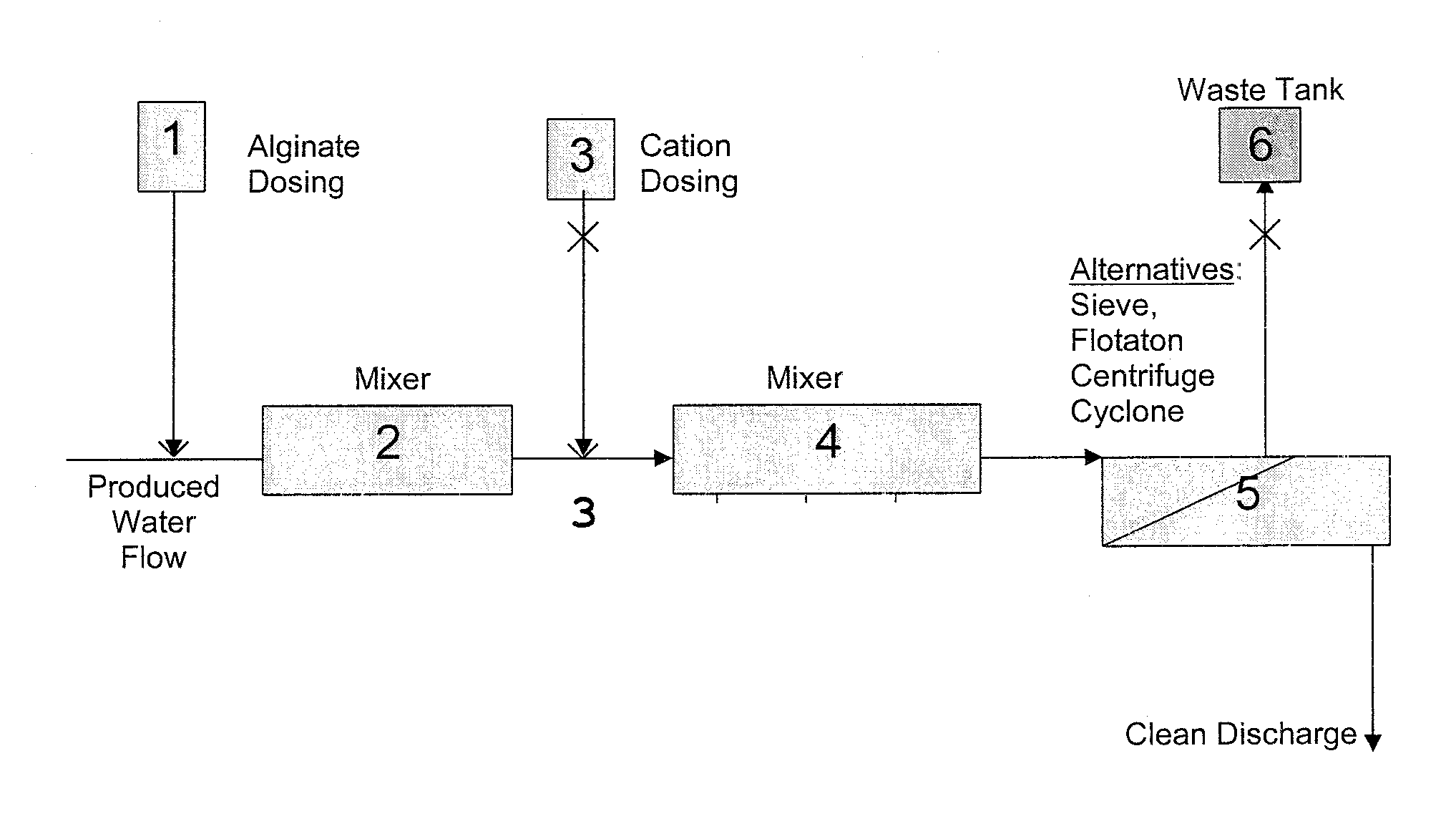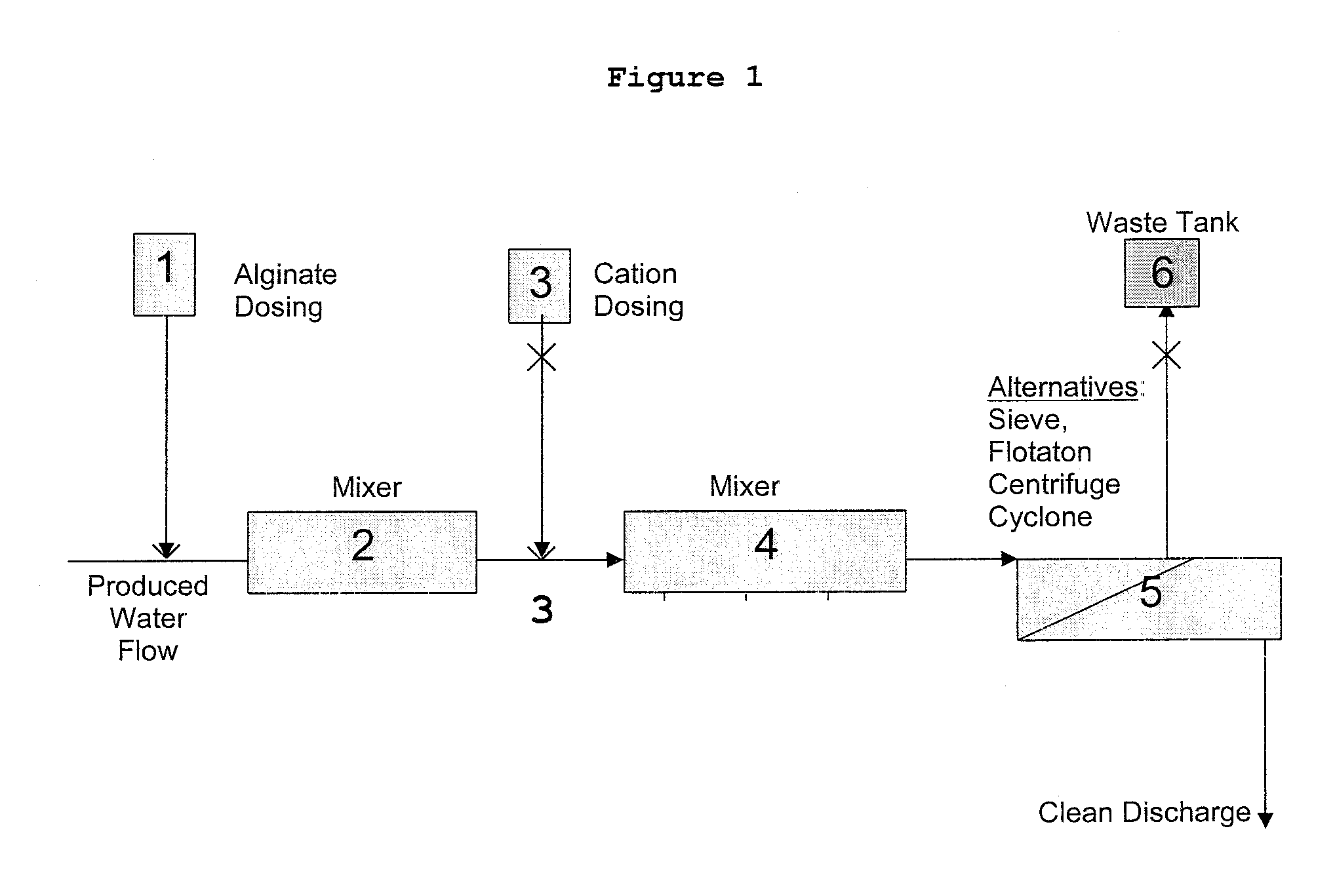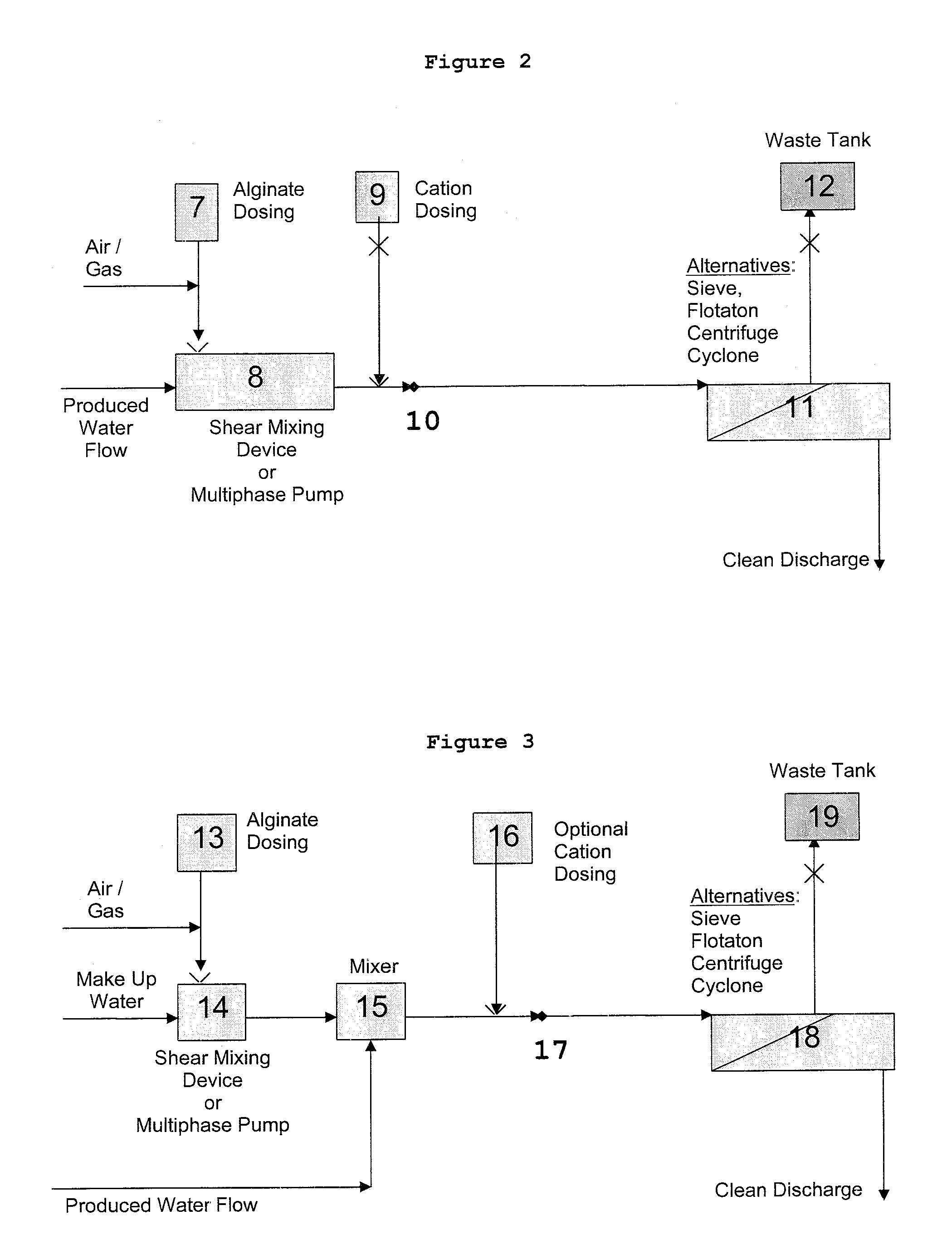Method for removal of materials from a liquid stream
a liquid stream and material technology, applied in the direction of evaporation, separation processes, water/sewage treatment by ion exchange, etc., can solve the problems of not yielding steady discharge, process is not well suited to handle water-soluble components, and most such processes are subject to variations. , to achieve the effect of avoiding premature gelling
- Summary
- Abstract
- Description
- Claims
- Application Information
AI Technical Summary
Benefits of technology
Problems solved by technology
Method used
Image
Examples
example 1
[0052]A stream of water of 50 000 m3 / day with a hydrocarbon level of 200 ppm was cleaned to zero discharge. Sodium alginate was dosed into the water stream at 2 ppm. This results in a consumption of 100 kg of sodium alginate per day. Correspondingly, 50 kg of calcium chloride are used per day.
[0053]Calcium chloride was mixed into 100 litres of water without difficulty. As a practical matter, alginate concentrations, when used in a dissolved form in solution, will rarely be above 1% in water. This represents a consumption of 100 m3 of ready-mixed alginate solution per day, which would pose logistical and economic problems. In the case of the use of un-dissolved alginate, as in the present invention, the added material can be reduced to make it possible to use of a 4 m3 / h multiphase pump connected to the water supply with a dosing station for 4 kg of dry material per hour.
[0054]The extent of cleaning of oil polyaromatic hydrocarbons, total extractable organic carbon, naphthalene phena...
example 2
[0056]20 litres of water produced by the oil industry was treated according to the description given below. The initial oil content was 100 ppm, the initial phenol content was 2.1 ppm and the initial benzene, toluene, ethylene and xylene (BTEX) content was 1440 ppb. 2 mg / l sodium alginate was added in powder form during a period of 5 seconds of intense mixing. One could visually see an oil / water phase which remained as a separate phase even when left standing. Thereafter, 1 mg / l calcium chloride was added to the water again during a period of 5 seconds of intense stirring. Large gel agglomerates were formed immediately. After 20 seconds, the water phase was completely clear and oil lay on top of the gel agglomerates. Tests of the water phase showed less than 1 ppm oil remaining. The mixture was stirred rapidly for 15 seconds. After 30 seconds, the water phase was again completely clear. Tests now also showed less than 1 ppm oil in the water phase. The BTEX contents in the water phas...
example 3
[0057]10 litres of a wastewater stream was treated according to the method of Example 2 and with the same initial concentrations, but this time with addition of un-dissolved alginate in a marine oil base in combination with the extraction agent 2-(2-butoxy ethoxy) ethanol under shear. A corresponding procedure was carried out, with visually the same results. For oil and BTEX the results corresponded with the first test, but this test reduced the phenol content in the liquid stream to less that 0.1 ppm in both tested cases.
The Dissolved Form of Polysaccharide or Hydrocolloid
[0058]In another aspect, the present invention relates to a process for the removal of dissolved and / or un-dissolved organic and inorganic pollutants from a continuous stream of liquid by blending polysaccharides or hydrocolloids dissolved in water, optionally in combination with a pulverised sorption agent into a continuous stream of liquid. Subsequently, the polysaccharide or hydrocolloid is reacted with suitabl...
PUM
| Property | Measurement | Unit |
|---|---|---|
| temperature | aaaaa | aaaaa |
| pressure | aaaaa | aaaaa |
| temperature | aaaaa | aaaaa |
Abstract
Description
Claims
Application Information
 Login to View More
Login to View More - R&D
- Intellectual Property
- Life Sciences
- Materials
- Tech Scout
- Unparalleled Data Quality
- Higher Quality Content
- 60% Fewer Hallucinations
Browse by: Latest US Patents, China's latest patents, Technical Efficacy Thesaurus, Application Domain, Technology Topic, Popular Technical Reports.
© 2025 PatSnap. All rights reserved.Legal|Privacy policy|Modern Slavery Act Transparency Statement|Sitemap|About US| Contact US: help@patsnap.com



